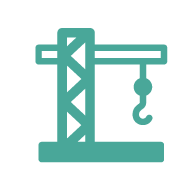TOOLKIT HOME

Fiscal pressures and increasing demand for consumer-preferred, lower cost home- and community-based services (HCBS) have driven and continue to drive states to invest in long-term services and supports (LTSS) system changes that promote rebalancing, better predict LTSS costs, and ensure greater access to HCBS. One important strategy for ensuring access to high-quality HCBS is to enhance system capacity. Increasingly states are recognizing the need to invest in LTSS infrastructure, such as building workforce capacity and improving enrollee communications.
This strategy describes different approaches and implementation mechanisms that states have used to expand LTSS infrastructure, along with program case studies:
Approaches
- Simplifying access to information and referrals for beneficiaries
- Ensuring access to LTSS based on standardized eligibility
- Offering sufficient and well-trained direct care workforce
- Supporting the informal caregiver workforce
- Developing person-centered care plan
Implementation Mechanisms
- Federal, state, and private funding
- Section 1115 waiver
- State-based managed care contracting authority
- State regulatory changes
- Pilot programs
State Case Studies
- Creating a one-stop information and referral network (MA)
- Implementing paid family leave for family caregivers (CA)
- Developing a standardize HCBS needs assessments (NY)
- Funding to recruit/retain care workers (NY)
- Establishing a nurse delegation to increase HCBS access (NJ)
- Creating a comprehensive LTSS workforce strategy (TN)




